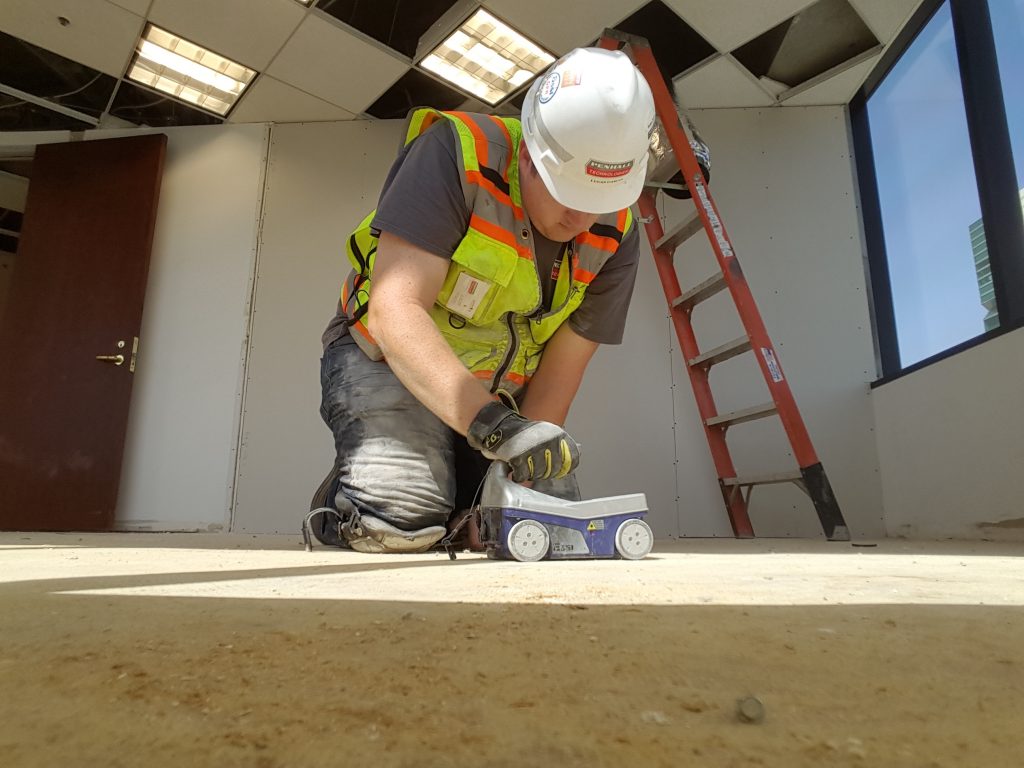Selecting the Right Concrete Scanning Devices
Selecting the Right Concrete Scanning Devices
Blog Article
Reveal the Transformative Power of Concrete Scanning in Making The Most Of Efficiency and Safety
Concrete scanning has emerged as a critical tool in the construction market, using unparalleled advantages in enhancing task efficiency and making sure safety and security criteria. The transformative power of concrete scanning exists in its ability to offer thorough insights and real-time information, reinventing how projects are intended and implemented.
Significance of Concrete Scanning
Guaranteeing the structural integrity and security of building and construction jobs begins with the vital step of performing thorough concrete scanning. Concrete scanning is a non-destructive approach made use of to identify and map subsurface elements within concrete structures. This process is necessary in determining prospective dangers, such as rebar, post-tension cable televisions, and channels, that may be hidden within the concrete. By using sophisticated technologies like ground-penetrating radar (GPR) and electro-magnetic induction, building and construction teams can precisely find these components without triggering any damage to the structure.
The importance of concrete scanning can not be overstated, as it plays a crucial function in preventing crashes, lessening job delays, and guaranteeing the lasting resilience of the building. By determining potential hazards prior to the building phase begins, builders can implement appropriate safety and security actions and make informed decisions pertaining to the style and implementation of the job. In addition, concrete scanning assists in maximizing job timelines and spending plan by avoiding unforeseen costs and hold-ups that might develop due to unpredicted blockages within the concrete. Ultimately, purchasing thorough concrete scanning is a proactive strategy that enhances both efficiency and safety and security in building jobs.
How Concrete Scanning Functions
Concrete scanning runs as a critical tool in building projects by employing sophisticated technologies to discover and map subsurface aspects without causing structural damages. Ground Penetrating Radar (GPR) and Electromagnetic Induction (EMI) are 2 main techniques used in concrete scanning.
Throughout the scanning procedure, the information collected is assessed in real-time, enabling prompt recognition of potential hazards or obstacles under the surface area. By utilizing these sophisticated modern technologies, concrete scanning significantly decreases the danger of pricey damages and injuries on building websites.
Advantages of Concrete Scanning
One of the primary benefits of concrete scanning is the ability to identify and locate embedded things such as rebar, post-tension wires, and conduits precisely. Concrete scanning aids in planning and designing extra successfully, as it supplies specific info regarding the location and depth of architectural parts.

Situation Researches: Concrete Scanning Success

In one more situation, a construction company utilized 3D concrete scanning to examine the problem old concrete frameworks in a historic building. The thorough scans provided beneficial understandings right into the level of damage and assisted focus on maintenance efforts successfully. By proactively resolving locations of concern determined via scanning, the firm was able to expand the lifespan of the framework and make certain resident safety and security.
These instance research studies emphasize the transformative power of concrete scanning in boosting effectiveness, accuracy, and security in building and construction jobs.
Carrying Out Concrete Scanning in Projects
Executing sophisticated scanning modern technologies during building tasks has actually come to be significantly vital for enhancing accuracy and safety and security. By incorporating concrete scanning into job preparation and Home Page execution, building teams can determine possible threats, such as rebar or post-tension cable televisions, hidden within concrete frameworks. This proactive strategy decreases the threat of mishaps, delays, and costly rework, eventually causing much more reliable task timelines and budgets.
To apply concrete scanning effectively, project supervisors ought to team up carefully with knowledgeable scanning experts to identify one of the most appropriate scanning strategies for the certain task needs. Engaging scanning experts from the onset of a task allows the group to create extensive scanning strategies that resolve crucial locations of worry and guarantee complete information collection.
Additionally, including concrete scanning into regular project workflows can streamline decision-making processes, as real-time check data supplies instant understandings into the condition of concrete frameworks - Concrete Scanning. This data-driven technique assists in notified analytical and makes it possible for groups to make modifications without delay, cultivating a culture of efficiency and safety throughout the task lifecycle

Final Thought
In verdict, concrete scanning plays a critical function in enhancing performance and safety and security in building and look at this now construction projects. By utilizing sophisticated innovation to detect and map out underlying frameworks within concrete, this procedure aids to prevent expensive errors, make certain structural stability, and lessen dangers on website. With the capability to uncover covert components and offer exact information, concrete scanning confirms to be an important device for maximizing project results and taking full advantage of general success.
Concrete scanning is a non-destructive technique utilized to discover and map subsurface components within concrete structures. In addition, concrete scanning aids in enhancing task timelines and budget plan by preventing unanticipated expenses and hold-ups that may arise due to unanticipated blockages within the concrete. One remarkable case research involves a large-scale restoration task where concrete scanning played an essential function in making sure job success.In another Your Domain Name case, a construction company used 3D concrete scanning to analyze the problem of aging concrete frameworks in a historical structure. By incorporating concrete scanning into job preparation and execution, construction teams can determine prospective dangers, such as rebar or post-tension cable televisions, concealed within concrete structures.
Report this page